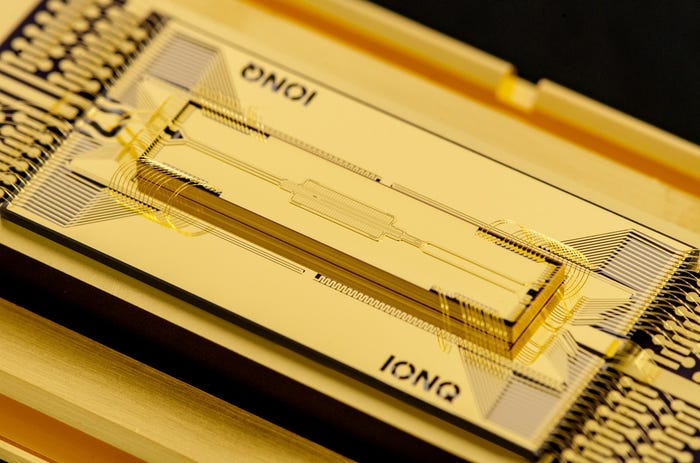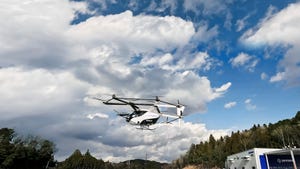Connected Workforce Technology: The Essential Guide for Frontline Workers and Corporate LeadersConnected Workforce Technology: The Essential Guide for Frontline Workers and Corporate Leaders

In today's fast-paced manufacturing environment, maximizing efficiency, productivity and quality is paramount. Yet disruptions are a constant threat, with machine downtime and non-machine-related issues affecting production regularly.
Manufacturers lose an average of 800 hours to equipment downtime each year, which is more than 15 hours per week. Compounding the problem, ongoing labor shortages and high employee turnover rates — averaging 39% — create additional hurdles.
To overcome the common industry challenges, manufacturers must adopt connected workforce technology. These platforms enhance visibility, streamline production and significantly improve operational efficiency. By integrating connected technologies, manufacturers can better manage machine downtime, better address labor shortages and reduce employee turnover, ultimately up-leveling their overall manufacturing capabilities.
Understanding Connected Workforce Technology
Connected workforce platforms (CWP) are becoming essential to modern manufacturing as they focus on empowering workers and increasing productivity and efficiency on the shop floor. CWPs integrate workers with the manufacturing environment, offering functionalities such as real-time disruption visibility, digital changeover instructions and real-time machine health monitoring.
The seamless integration of workers with the manufacturing environment plays a crucial role in making frontline workers more productive and efficient. CWPs transform the manufacturing landscape by equipping workers with the tools and information they need to excel in their roles.
Improving Productivity and Uptime
Connected workforce platforms improve productivity and uptime by significantly reducing machine downtime. Utilizing advanced capabilities such as predictive analytics, real-time machine monitoring, disruption tracking and data visualization, these platforms empower workers at all levels to swiftly identify and address production issues.
By providing real-time visibility into line and machine performance through user-friendly portals, CWPs enable operators and supervisors to proactively manage maintenance schedules, preventing machines from becoming safety hazards or experiencing unexpected breakdowns.
A major advantage of connected workforce technology is its ability to centralize and digitize instructional materials, such as standard operating procedures (SOPs), digital work instructions, safety guidelines and troubleshooting guides.
Accessible through a single platform, these resources ensure workers have the necessary information to operate machines correctly and resolve problems independently. Additionally, built-in communication tools allow operators to consult with experts across the globe when faced with complex issues, further enhancing their ability to maintain smooth operations.
For maintenance teams, CWPs provide comprehensive views of machine health and facilitate training to enhance repair capabilities. These platforms also support inventory management by tracking spare parts availability, ensuring technicians always have the necessary components for quick repairs. By equipping supervisors and managers with these insights, connected workforce technology helps identify and resolve potential issues before they escalate. Furthermore, AI-powered features can suggest maintenance tasks based on equipment cycles and conditions, further minimizing disruptions and unplanned downtime.
Prioritizing Safety Through Effective Communication
Connected worker platforms play a pivotal role in enhancing manufacturing workplace safety by providing workers with real-time data, alerts, and instant communication tools. This branch of connected manufacturing technology enables immediate response to hazards and fosters safer practices. It bridges the gap between workers and safety systems, leading to a more informed and protected work environment.
In a connected manufacturing setting, field workers equipped with mobile devices have instant access to a wealth of information.
For instance, a worker on the factory floor can quickly report a safety hazard or consult digital manuals, safety protocols or machinery specs on their device. This on-the-spot access to information reduces the risk of errors and enhances decision making, especially in complex or hazardous tasks.
Moreover, these mobile devices enable seamless communication with team members and supervisors. If a worker encounters an unexpected situation or equipment malfunction, they can instantly share the issue with their team or seek expert guidance. This connectivity not only accelerates problem resolution but also fosters a collaborative safety culture, where workers are continuously supported and informed.
This approach makes safety a more personal and collective effort, enhancing overall workplace safety and accountability by empowering workers to take responsibility for their own safety and that of their co-workers.
Another example of connected safety in a manufacturing facility is the use of IoT and sensors to monitor machine temperatures. If a machine or device becomes overheated, sensors immediately pick up the temperature abnormality and send a safety alert to nearby workers’ connected devices. From here, maintenance teams can quickly shut the machine down before beginning diagnostics and repairs, ensuring a prompt and effective response to potential safety hazards.
Engaging and Retaining Talent With Digital Integration
Beyond productivity and safety, connected workforce platforms address key issues in employee engagement and empowerment.
Traditional plant management often relies on manual processes or disparate systems, resulting in inconsistent data and challenging tracking. Some manufacturers reported spending 30 to 120 minutes per day on paperwork alone, contributing to employee frustration and disengagement. In such environments, employees may lack access to essential instructions, safety notices and data on their performance, making it difficult to maintain motivation and morale.
It’s essential to employ digital work instruction systems to capture tribal knowledge and turn it into easily accessible guidance. This not only reduces paperwork but also provides clear expectations for employees, leading to improved engagement and lower turnover.
For workers to truly be "connected," digital tools must be intuitive, efficient and portable.
CWP vendors prioritize mobility and user experience, providing mobile-friendly technology that allows workers to access critical information remotely. Digital work instructions and video/AR guidance significantly enhance training and job-specific knowledge. By replacing manual processes with streamlined digital systems, CWPs address key issues in employee engagement and empowerment. Relying on inconsistent data and cumbersome tracking, like traditional systems, leads to frustration and disengagement among employees who spend significant time on paperwork.
As digital natives become a larger part of the workforce, their familiarity with technology becomes crucial for retention and engagement. Younger generations expect modern, efficient tools that reflect their daily digital interactions, making the integration of connected workforce platforms not just a productivity booster but also a key strategy for attracting and retaining talent across all age groups. By catering to the technological preferences of different generations, companies can foster a more cohesive and motivated workforce.
The Future of Connected Workforce Technology
The future of connected worker technology is marked by significant advancements in AI integration, AI-driven task guidance and business intelligence (BI) integration.
AI is revolutionizing shop floor processes with applications in predictive maintenance, quality monitoring, and supply chain management, all tailored to the needs of frontline workers. The impact of AI on manufacturing is evident, with studies showing that digitally empowered workers are 22% more productive, underscoring AI's value in enhancing efficiency and productivity.
Connected workforce solutions utilize AI to analyze vast amounts of data, providing actionable insights through AI-driven task guidance and natural language processing.
Features such as chatbot assistants and automated report generation are becoming essential, enhancing user-friendliness and effectiveness. These tools enable workers to make informed decisions quickly, thereby minimizing downtime and optimizing workflow processes. As AI continues to evolve, it will further streamline operations and empower workers at all levels of the manufacturing process.
Future developments include deeper BI integration, combining CWPs with software like Tableau or Power BI to provide comprehensive insights into manufacturing data. This integration will provide comprehensive insights into manufacturing data, aiding decision-making from the shop floor to the corporate office. By identifying and addressing production bottlenecks, these advanced BI tools will improve overall operational efficiency. As manufacturers increasingly adopt these technologies, they will be better equipped to meet the demands of a rapidly changing industry landscape, driving continuous improvement and innovation in manufacturing practices.
Conclusion
Connected workforce technology is revolutionizing manufacturing by tackling critical challenges such as labor shortages and downtime. Through real-time visibility, automated processes and AI-driven insights, connected workforce platforms empower workers, reduce costs and enhance overall manufacturing performance. By integrating advanced technologies and focusing on worker empowerment, these platforms significantly boost productivity and efficiency across manufacturing operations.
As connected workforce platforms continue to evolve, their impact on the manufacturing industry will only grow, making them indispensable tools for future-ready manufacturing. Manufacturers navigating a rapidly changing landscape must embrace these technologies to stay competitive and meet the demands of a global market. The adoption of connected workforce technology is not just an option but a necessity for those aiming to thrive in the modern manufacturing environment.
About the Author
You May Also Like






